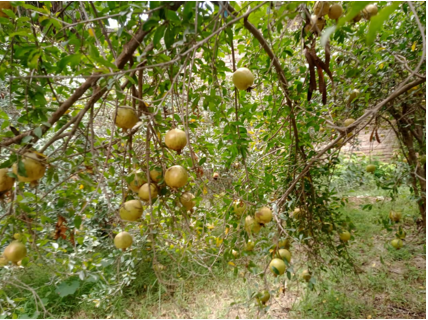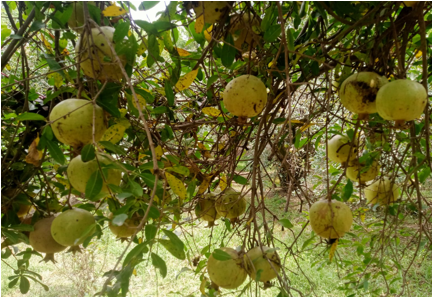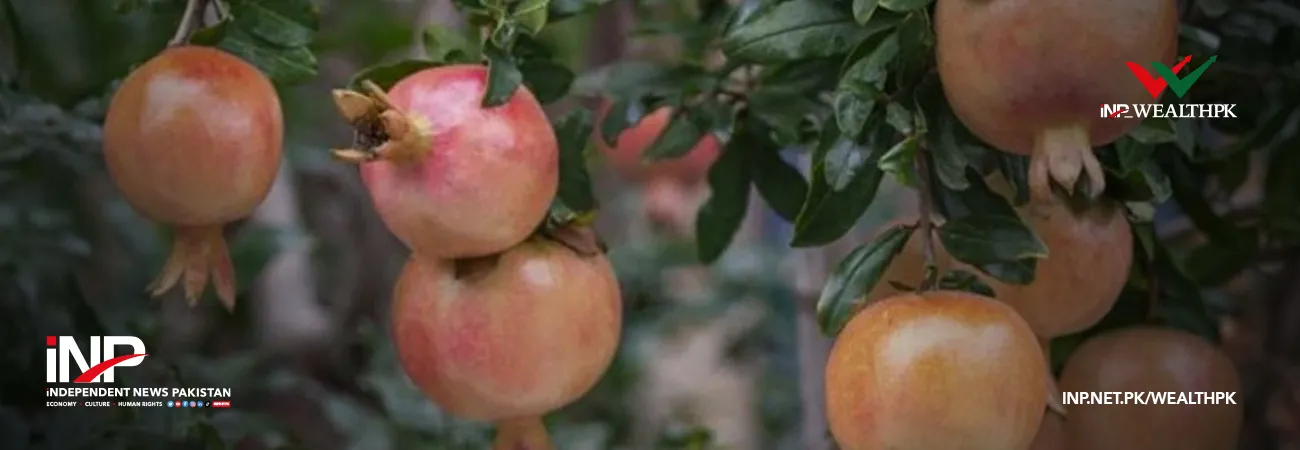INP-WealthPk
Azeem Ahmed Khan
Once celebrated as the “Anaro Wala” region of Punjab, Alipur Tehsil in southern Pakistan is witnessing the dramatic decline of its prized white pomegranate variety due to a mysterious disease that causes the fruit to split open before ripening. Once cultivated over 4,000 acres, the crop now survives on just 400 acres.

Talking to WealthPK, Arif Hussain Malik, one of the few remaining pomegranate farmers in Alipur, part of Dera Ghazi Khan Division, lamented the sharp decrease in production and the government’s inaction. “This fruit was once our identity, but now it is a fading memory because the orchards have vanished, and so has our hope.”
Unlike other pomegranate varieties grown in Pakistan, which ripen in cooler climates and have a sour taste, Alipur’s pomegranates flourish in extreme heat and are refreshingly sweet, he said. The region is home to three rare varieties of pomegranate Sandura, Sava also called Chitta Kaghzi, and Kalay Har. Sandura is a light, sweet, pink-skinned fruit with a white inside and is available from June to July.
Sava is honey-sweet with greenish-white seeds, and is the most cultivated variety. Kalay Haar is extra sweet, but it is grown casually in homes, not commercially, Arif informed. According to Arif, Alipur’s pomegranates were once so highly regarded that they were sent to England as premium gifts before Pakistan’s independence.

But since the 1992 floods, the fruit has been plagued by black spots and premature splitting. Arif attributes the decline to a combination of climate stress, disease, and a lack of research. The fruit flies have added to the destruction, he said.
Despite a seminar once held by the Punjab Agriculture Department to address the crisis, there has been no follow-up, he regretted. “We were promised fungus-free nursery plants and government-backed research, but nothing happened,” Arif claimed. The farmers are left to experiment on their own, from adjusting plant density to using smoke from burnt dung in desperation, he added.
The farmers have found that overexposure to sunlight makes the fruit more vulnerable to splitting, he said. On the contrary, trees planted closer together form a natural canopy, shading the fruits and offering some protection, he explained. Traditionally, the farmers grew 200 plants per acre, but newer methods, involving 300 to 400 plants per acre, have shown promising results, though adoption remains slow, he pointed out.
Pomegranate farming in Alipur is dying because of official neglect, Arif claimed. “If disease-free nurseries are not established and support does not come soon, even the remaining 10% of the crop will disappear,” he feared. According to the agricultural data, Pakistan produces 50,000 tonnes of pomegranates annually on about 10,000 hectares.
Alipur once led the way, with its varieties even spreading to Allah Abad in Tehsil Liaquatpur and Haroonabad, only for the disease to follow them there too, Arif said. With the ongoing decline, many local farmers are switching to other crops, leaving behind the orchards that once defined their land, economy, and pride, he added.
Credit: INP-WealthPk













